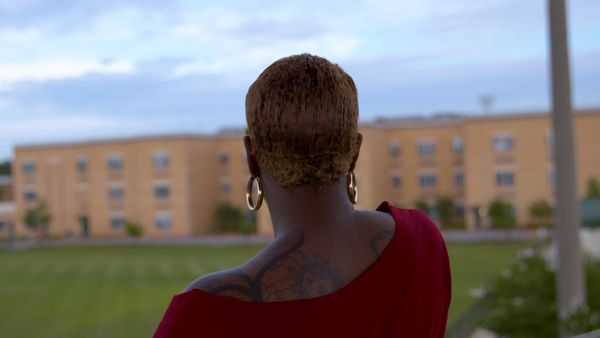Eye For Film >> Movies >> Spring Valley (2021) Film Review
Spring Valley
Reviewed by: Jennie Kermode

In most parts of the world, statements like "it would be impossible to manage without cops in schools" are liable to prompt a sharp intake of breath and a couple of moments of silence whilst the listener wonders if there's something wrong with their hearing. The US, however, has its own special way of looking at the world. Within its borders, this documentary, which screened at SXSW 2021, is being seen as a contribution to a debate. Looked at from a distance it reveals a different aspect: it's an intriguing look at how opinions can form within cultural bubbles which completely defy a rational analysis of widely available evidence.
In cultural terms, this is more than an academic debate, even if it's a debate focused on an academic setting. Following an incident on 26 October 2015, it was tagged as a controversy, practically guaranteeing that it would be seen in terms of opinion instead of observable facts. Garrett Zevgetis' film opens by giving some leeway to this stance, perhaps hoping to engage a broader set of viewers, but then quickly narrows its focus to concentrate on what can be observed. This is Niya Kenny's famous video of an incident which took place in her school - Columbia, South Carolina's Spring Valley High - in which her fellow student Shakara was dragged from her desk by a uniformed police officer, slammed onto the ground and handcuffed. Playing this slowly and pausing at key moments makes it easy to see what happened and easy to see how it conflicts with the officer's subsequent account. This, however, is only one part of a complex story.
Why was Shakara disciplined? Various parties give their views but a few clear facts emerge. She was refusing to hand over a mobile phone which she may or may not have been using inappropriately. She was also refusing to leave the classroom, asserting that she had done nothing wrong. At no point was she violent. After the officer became involved, both she and Niya were arrested and charged with the criminal offence of disrupting school.
There's a lot to unpack there, and it's teased apart bit by bit by a succession of scholars and other relevant experts. The issue is further complicated by the fact that the girls involved were African American and the officer was white. Would the same thing have happened if the girls were white too? Geographer Janae Davis explores the history of the region, visiting an island in the nearby swamp where enslaved people worked on rice plantations, and tracing threads of prejudice through to the present, exploring the deep level at which they're woven into the society that developed there.
Probably the most interesting part of the film concerns healer advocate Vivian Anderson's interviews with the police officer, Ben Fields. Again, there's a lot to unpack. One's first impression of him is that he's a personable, friendly guy, and Anderson herself seems swayed by that, repeating that she thinks he has the capacity to learn despite his immediate defensiveness. Watching them, one waits for the moment when t might click. He doesn't think of himself as racist. Not every viewer will pick up on the subtle othering at work in his reminiscences about hanging out in black neighbourhoods as a kid. He's completely unwilling to countenance the idea of subconscious bias, however, even when it's explained to him that there's a lot of research which clearly shows it, maintaining that this is just a matter of opinion. Friends of his assert that he's a nice guy so couldn't possibly have intended to harm Shakara. One goes so far as to imagine a conspiracy and allege that "they have done something" to the video, rather than accept the evidence of her own eyes.
Perhaps the most telling part of Fields' behaviour is that he keeps insisting that his response was proportional, apparently unable to perceive any difference between dealing with dangerous criminals and dealing with non-violent 16-year-old schoolgirls. He keeps insisting that he didn't harm her so there's no need for all this fuss. The girl's emotional trauma notwithstanding, he fractured her wrist. This fact seems too trivial to have stuck in his mind.
Going beyond those directly involved in the incident, the film looks at how responses to it varied, with a shocking proportion of people blaming the girl or simply arguing that violence is the only way to keep students in line. What people can't see, they invent, suggesting that she must have done something to deserve what happened. it's plain that many are heavily invested in defending the status quo to the point where truth and fairness are minor considerations.
Reflecting on the exhausting experience of trying to explain racial prejudice to white people, and suggesting that resistance to understanding stems in part from a specific white experience of trauma caused by racism, the film balances a search for solutions with an understandable degree of cynicism. Can the Black Lives Matter movement bring about change? "This is our one chance," says one woman, and one reflects with sadness on how often that has been said in US history. Yet if more white people were to watch this film, that might help the process along.
Reviewed on: 20 Mar 2021














